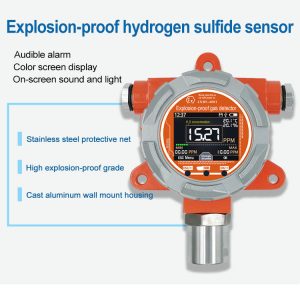Air pollution is a significant environmental issue that affects the health and well-being of millions of people worldwide. Monitoring air quality is crucial for understanding pollution levels, identifying sources, and implementing effective mitigation measures. Gas sensors have emerged as powerful tools in monitoring air quality, providing real-time data on various pollutants. This article explores the importance of gas sensors in monitoring air quality and their potential benefits in addressing air pollution.

Understanding Gas Sensors:
Gas sensors are advanced devices designed to detect and measure the concentration of specific gases in the atmosphere. They utilize various technologies such as electrochemical, semiconductor, and optical sensors to detect gases like carbon dioxide (CO2), carbon monoxide (CO), nitrogen dioxide (NO2), ozone (O3), and particulate matter (PM). Gas sensors play a crucial role in monitoring air quality by providing accurate and timely information about pollutant levels.
Real-Time Monitoring:
One of the significant advantages of gas sensors is their ability to provide real-time measurements of pollutant concentrations. Traditional air quality monitoring systems often rely on periodic sampling and laboratory analysis, which can lead to delays in obtaining data. Gas sensors, on the other hand, offer continuous monitoring capabilities, allowing for immediate detection of pollution spikes and rapid response to potential health risks.
Identifying Pollutant Sources:
Gas sensors enable the identification and tracking of pollutant sources in real-time. By deploying an array of gas sensors across an area, sources of pollution can be pinpointed with greater accuracy. For example, in urban environments, gas sensors can help identify emission hotspots such as busy roads, industrial zones, or construction sites. This information is invaluable for urban planners and policymakers in developing targeted strategies to reduce pollution and improve air quality.
Assessing Indoor Air Quality:
Monitoring indoor air quality is equally important, as people spend a significant amount of time indoors. Gas sensors can be used to detect harmful gases and volatile organic compounds (VOCs) in indoor environments, such as homes, offices, and schools. By monitoring indoor air quality, potential health risks can be identified and addressed promptly, leading to healthier and more productive indoor environments.
Early Warning Systems:
Gas sensors can serve as part of early warning systems for specific pollutants. For example, in areas prone to high levels of ozone or particulate matter during specific seasons, gas sensors can provide warnings when pollutant concentrations reach unhealthy levels. This allows individuals, especially those with respiratory conditions, to take necessary precautions and reduce exposure to harmful pollutants.
Data-Driven Policies and Interventions:
Accurate and reliable air quality data provided by gas sensors form the basis for evidence-based policies and interventions. Governments and environmental agencies can use this data to establish air quality standards, develop emission reduction strategies, and assess the effectiveness of pollution control measures. Gas sensor networks can also facilitate citizen engagement by sharing real-time air quality data, empowering individuals to make informed decisions regarding their health and activities.
Environmental Research and Studies:
Gas sensors play a vital role in environmental research and studies related to air pollution. Scientists utilize gas sensor data to understand pollutant dispersion patterns, study the impact of complex pollutant mixtures, and evaluate the effectiveness of pollution control technologies. This knowledge contributes to the development of innovative solutions and policies for improving air quality and addressing the challenges posed by air pollution.
Conclusion:
Gas sensors are indispensable tools in monitoring air quality and combating air pollution. With their ability to provide real-time data, identify pollutant sources, and support evidence-based decision-making, gas sensors empower individuals, communities, and policymakers to take proactive measures towards cleaner and healthier air. By investing in robust air quality monitoring networks using gas sensors, we can make significant strides in reducing pollution levels, protecting public health, and preserving the environment for future generations.
 : +86 155 8830 2704
: +86 155 8830 2704 : jxdziot@gmail.com
: jxdziot@gmail.com
